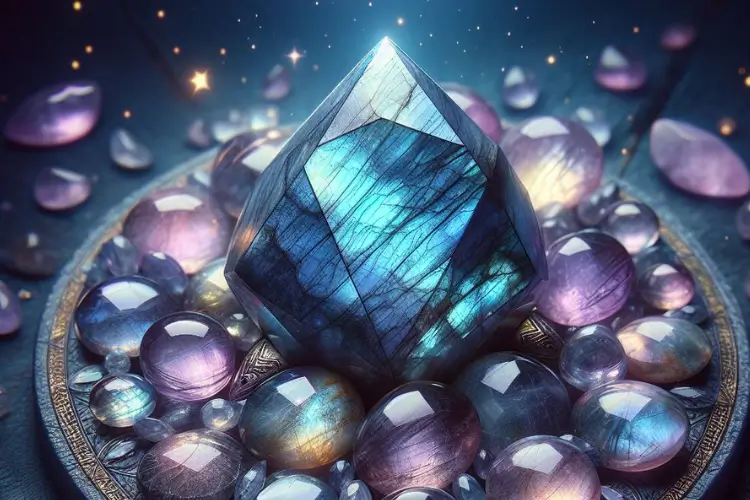Purple Labradorite stone is a type of feldspar. It is a purple-to-pink mineral with a hardness of 6-6.5 on the Mohs scale. Purple Labradorite stone is found in many parts of the world but is most common in Madagascar, Sri Lanka, and North America.
Purple Labradorite is a gemstone that’s known for its deep, dark color and how it reflects light.
It has been known to be used as an ornamental stone, but it has also been used as a healing stone.
What Are the Benefits of Purple Labradorite?
The benefits of purple labradorite are its healing properties.
It is a stone that helps with stress, anxiety, and depression.
It can be used to heal past wounds, and it’s also a stone of self-love.
Purple labradorite has been used for centuries by different cultures for many purposes.
In ancient Egypt, it was considered the symbol of life and used as an amulet to protect children from evil spirits.
The Aztecs believed that it could help them see the future in dreams.
How Do You Care for Purple Labradorite?
To care for your purple labradorite, you should avoid wearing it when doing any type of work requiring heavy labor or rough handling.
You should also avoid exposing the gemstone to extreme temperatures and chemicals because they can cause damage to the stone.
How Does Purple Labradorite Affect Your Emotions?
Purple labradorite is a stone that can be used to calm down and reduce stress.
It is also believed to improve your mood, making it easier to focus on tasks.
Purple labradorite is a gemstone that has been used for centuries in jewelry and decorative objects because of its color.
It has been associated with royalty and nobility because of the color’s rarity.
What Are the Different Colors of Purple Labradorite?
Purple labradorite is a beautiful gemstone.
It comes in various colors. Some of the most popular ones are lavender, lilac, and grape purple.
Purple labradorite is a rare gemstone that comes in many different colors.
One of the most popular ones is lavender, which is often mistaken for amethyst.
Lilac purple labradorite can be found in Madagascar, while grape purple labradorite can be found in India and Pakistan.
What Are the Properties of Purple Labradorite?
The properties of this gemstone are: that it can help with anxiety, depression, insomnia, and stress.
It can also help with physical ailments such as arthritis and fibromyalgia.
Where Can I Find Purple Labradorite?
Purple labradorite is a gemstone that is found on the earth’s surface. It is mainly found in Canada, Russia, India, and Madagascar.
How Do I Use Purple Labradorite?
Purple labradorite is a gemstone, that has a deep violet color, and can be used for healing purposes as well as spiritual purposes.
It can also be used to enhance creativity and intuition.
What Is the Metaphysical Meaning of Purple Labradorite?
The metaphysical meaning of purple labradorite can be interpreted in many ways.
One way to interpret this would be to associate color with royalty or nobility.
Purple may represent the power that comes from within you and your ability to create change in your life and the world around you.
What Are the Best Ways to Clean Purple Labradorite?
There are a few ways to clean purple labradorite.
One of the most popular methods is to place it in a bowl of salt water, which will remove any dust and dirt particles on the stone’s surface.
However, we don’t recommend putting purple labradorite gemstone in water or salt water.
You can also use a damp cloth to wipe down the stone, or toothpaste or baking soda for extra deep cleaning.
Purple labradorite is a popular gemstone often used in jewelry because it’s eye-catching and unique.
It has many different colors, including lavender, pink, blue, and green.
Cleaning this type of stone is important because it can be sensitive to chemicals such as ammonia and bleach.
What Is the Best Way to Clean Labradorite Jewelry?
Labradorite jewelry is a type of jewelry that is usually made of labradorite stones.
They are usually made with a sterling silver or gold base.
The best way to clean purple labradorite jewelry is by using a soft, dry cloth and wiping it down with the cloth.

